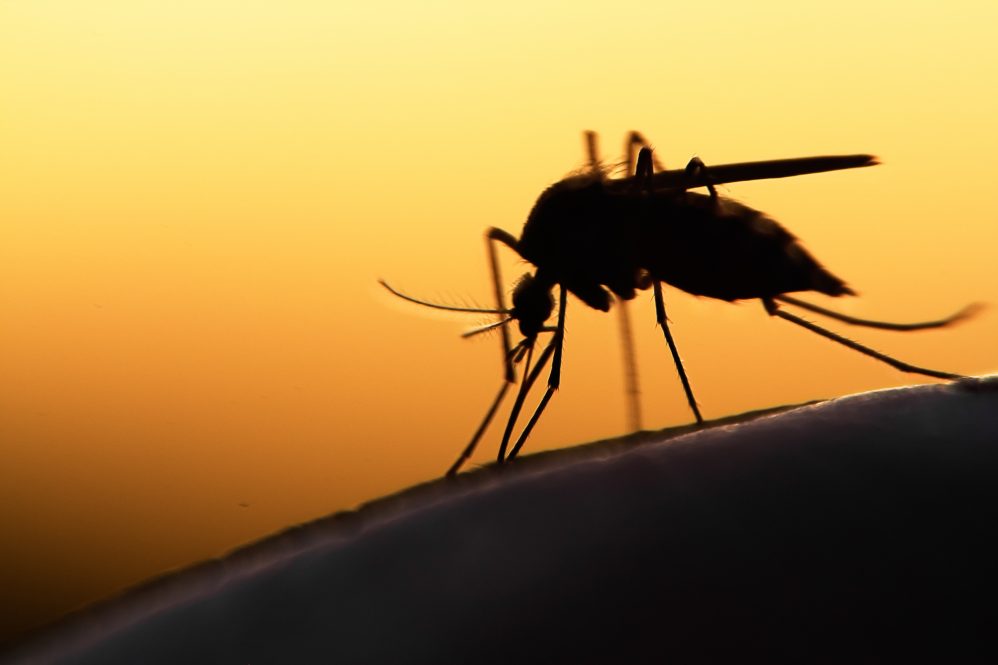Historically limited to small outbreaks in Central and South America, the oropouche virus is spreading to new places, including now the United States and Europe.
Of note, cases of the mosquito-borne illness also known as “sloth fever” have been reported in Florida and New York, associated with travel. The Centers for Disease Control and Prevention reported Aug. 27 of more than 800,000 confirmed cases in Central and South America so far this year, including two deaths.
Relative to other viruses, little is known about oropouche, which first was identified in Trinidad and Tobago in 1955. Dr. Kevin Dieckhaus, chief of the Division of Infectious Diseases and director of the International Traveler’s Medical Service at UConn Health, shares what he knows about the oropouche virus as of late August.

What makes the oropouche virus a concern today?
In 2023 it spread to new areas including Cuba. The current concern is due to an increase in cases seen in Latin America, including Bolivia, Brazil, Colombia, Cuba, and Peru. Several cases in travelers returning from Cuba have appeared in the United States, however UConn Health has not yet identified anyone infected with oropouche virus.
There are currently no vaccines or antiviral therapies available. Testing is available through the CDC.
How likely is it that enough people could bring this back to the U.S. to make it problematic?
This virus is typically transmitted via the bite of several types of mosquitoes or midges (“no-see-ums”). The typical hosts are animals including the three-toed sloth, hence the name “sloth fever,” nonhuman primates, and birds. Although the continental United States is thought to have an ecology that is unlikely to support ongoing transmission, there is concern in the southern states and the U.S. territories of Puerto Rico and the U.S. Virgin Islands that the virus could become established if introduced. The virus is not known to be transmitted person-to-person by other means such as direct contact or respiratory routes.
What else makes this potentially worrisome?
Oropouche infection leads to an illness that may be similar to other vector-borne viral illnesses such as Zika, dengue, and chikungunya. Forty percent of people may develop no symptoms at all. For those who do develop clinical illness, typically symptoms include nausea and vomiting, diarrhea, fatigue, eye pain, and rash. It may also impact the central nervous system, causing meningitis or encephalitis, or cause bleeding complications. There have recently been reports of pregnant women transmitting the virus to their fetus, leading to stillbirth or birth defects, similar to what was experienced with Zika virus. The CDC and World Health Organization are working to identify the degree of risk to pregnant women and travelers to these areas.
How do we treat someone infected with the oropouche virus?
Management is typically focused on symptom relief, anti-fever medications, analgesics, rest, and fluids. Although classically a self-limited disease with good recovery, many cases will have a rebound of symptoms after initial recovery, and some fatalities have now been reported.
We should point out that dengue, Zika, chikungunya, and malaria all may present with similar symptoms and share a similar geography. It is important to have a complete medical evaluation to assess which of these many conditions may be contributing to any suspected illness, as treatment will need to be tailored to the specific infection. For example, because dengue virus disease can mimic this illness, the use of aspirin or nonsteroidal anti-inflammatory drugs (NSAIDs), which can potentially complicate dengue, should be avoided until dengue is ruled out.
What do we still need to learn about the oropouche virus that could help us deal with it locally, if it comes to that?
Understanding that the oropouche virus epidemic is an evolving situation, health messaging regarding prevention, diagnosis, health impacts, travel-related safety, potential impacts on pregnancy, and therapies are all likely to change as more information becomes available.
At this time, there is no known local transmission of this virus in the United States. Understanding the transmission cycle of this virus is critical to designing preventive measures, should it be introduced into local insect vectors. As an insect-borne disease, use of personal insect prevention with FDA-approved repellents, environmental spraying of insecticides and reduction of mosquito and midge breeding environments could be implemented. This is similar to current strategies for managing other mosquito-borne viral illness that are present in our environment such as West Nile virus and Eastern Equine Encephalitis (EEE) virus.
What do/would you tell patients in your traveler’s clinic about this?
The International Traveler’s Medical Service keeps abreast of ongoing and developing situations that may affect international travelers. This typically includes potential infectious diseases but also issues related to safety and security, infrastructure and geopolitical risks. Travelers to the oropouche-endemic areas including the Caribbean, Central, and South America are provided education on disease prevention including, in this case, prevention of mosquito and midge bites.
Based on recent reports of maternal-to-fetal transmission and adverse birth outcomes, women who are pregnant or potentially could become pregnant should be particularly vigilant in employing insect precautions while traveling to the Caribbean, South and Central America. Therefore we also would discuss travelers’ individual risks regarding pregnancy and travel to these areas.
What should folks take into consideration when traveling to, or receiving visitors from, South America, Central America, or the Caribbean?
Travelers to affected areas should employ prevention measures through covering of skin through long sleeves and pants and use of repellents such as DEET or picaridin-based skin applications. Travelers to Cuba should be particularly vigilant with insect borne precautions due to a recent increase in cases there. Pregnant travelers may consider deferring travel to risk areas for now given the evolving concerns for potential impacts on the fetus.
Anyone returning to the United States from an area with oropouche transmission should continue to actively prevent insect bites for an additional three weeks in order to limit any potential introduction of the virus into local insect populations.
Learn more about the International Traveler’s Medical Service at UConn Health.



